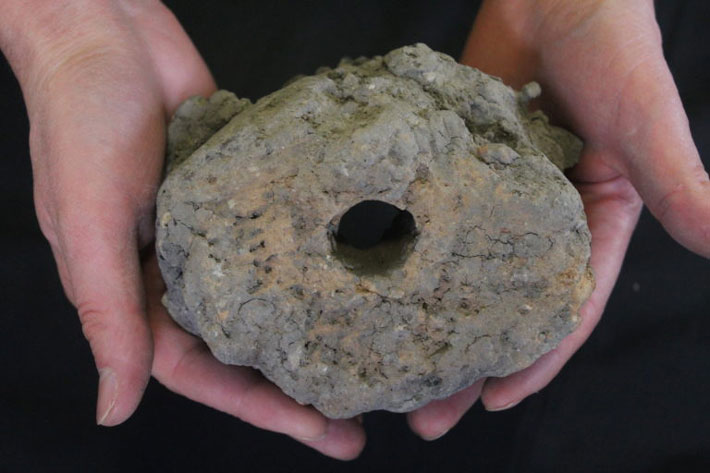 OXFORDSHIRE, ENGLAND—The Oxford Mail reports that a 2,700-year-old blacksmith shop has been discovered in an Iron Age settlement site complete with roundhouses, an Iron Age pantry, ceremonial animal burials, and traces of a Roman villa in southeastern England. The smithy was identified through traces of a hearth; hammerscale, the byproduct of forging iron; an iron bar; and a tuyere, a tool used to blow air into a hearth. “It’s exceptionally rare to find a complete tuyere, especially one that’s as old as this,” said archaeometallurgical specialist Gerry McDonnell. He explained that the tool dates to the first few centuries of ironworking in Britain, and noted that the size of the tuyere suggests that the hearth was much larger than one found in an average village blacksmith shop. This shop may have been run by a master blacksmith, he surmised. “The only reason a blacksmith would need a bigger hearth would be if they were forging something long like swords or trade bars, or big like cart wheels,” McDonnell concluded. To read about copper production on Bronze Age Cyprus, go to "In the Time of the Copper Kings."
OXFORDSHIRE, ENGLAND—The Oxford Mail reports that a 2,700-year-old blacksmith shop has been discovered in an Iron Age settlement site complete with roundhouses, an Iron Age pantry, ceremonial animal burials, and traces of a Roman villa in southeastern England. The smithy was identified through traces of a hearth; hammerscale, the byproduct of forging iron; an iron bar; and a tuyere, a tool used to blow air into a hearth. “It’s exceptionally rare to find a complete tuyere, especially one that’s as old as this,” said archaeometallurgical specialist Gerry McDonnell. He explained that the tool dates to the first few centuries of ironworking in Britain, and noted that the size of the tuyere suggests that the hearth was much larger than one found in an average village blacksmith shop. This shop may have been run by a master blacksmith, he surmised. “The only reason a blacksmith would need a bigger hearth would be if they were forging something long like swords or trade bars, or big like cart wheels,” McDonnell concluded. To read about copper production on Bronze Age Cyprus, go to "In the Time of the Copper Kings."
Iron Age Blacksmith Shop Found in England
